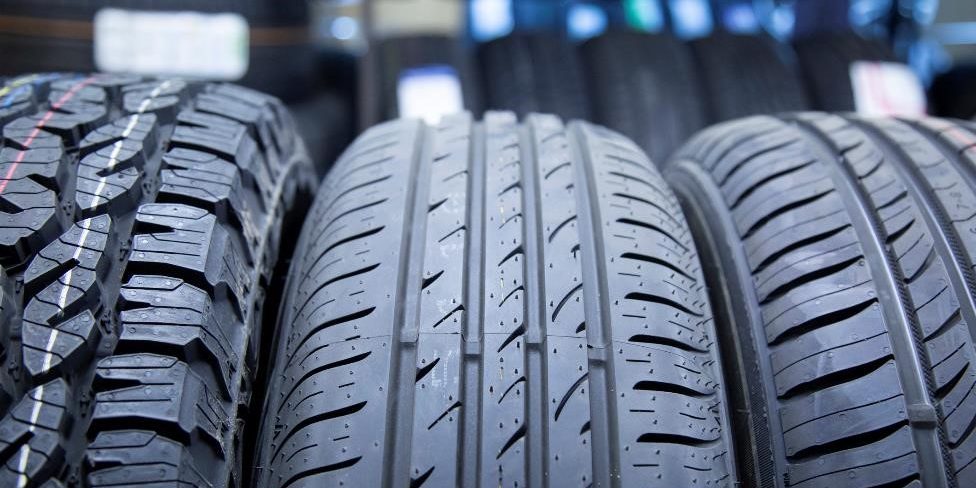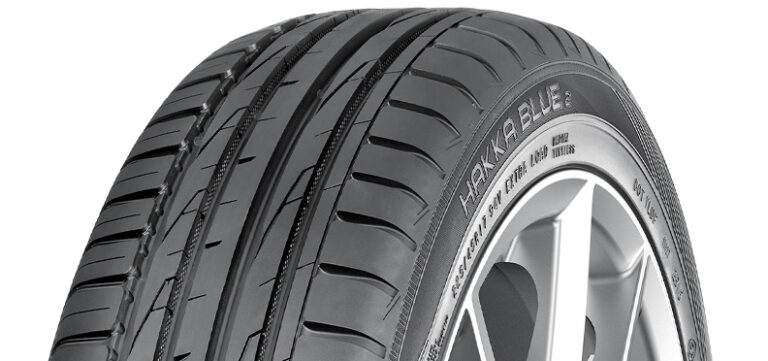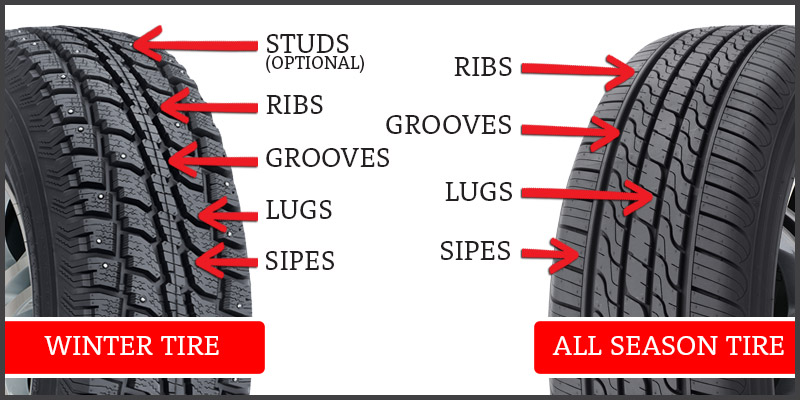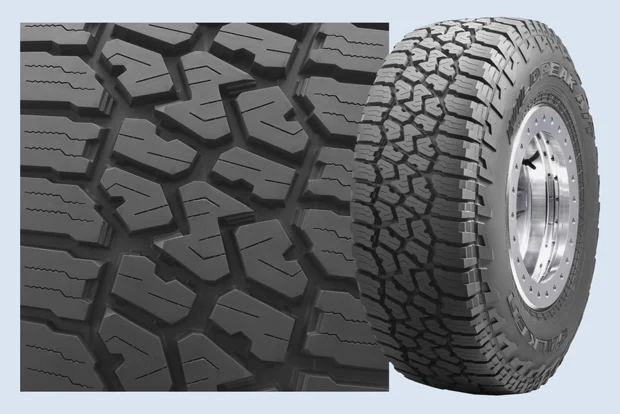This can be a beautiful time of year in the Sierra Nevada mountains. The leaves change color, rain starts to fall, rivers and creeks rise, and the snow begins to fall. Although the surrounding area is full of beauty the roads can be a bit treacherous. All the moisture falling from the sky can make the roads very slippery when wet. We count on our tires to help us keep traction with the road we are driving on. We will take a look at the 4 most common types of tires on the market.
There are many different types of tires out on the market.

- Summer Tires
- All Season Tires
- Winter Tires
- All Terrian
Summer tires

Summer tires have a specific rubber compound that delivers excellent grip and handling on both dry and wet roads in warmer conditions. They also have reduced rolling resistance which can provide greater fuel efficiency and generate less road noise. The tread pattern on a summer tire is more streamlined. tire, with fewer grooves for water clearance, which maximizes the contact patch with the road. Due to this design, the vehicle has superior traction and braking during dry warmer summer months.
However, these same qualities of a summer tire – the unique rubber compound and simple tread design – make summer tires unsuitable for winter driving conditions. When the temperature drops below 45 degrees Fahrenheit, the compound becomes hard and brittle, and the tread design can’t adequately handle snow or ice evacuation. The tire losing its ability to flex in the cold weather has a direct impact on its ability to maintain traction.
All Season Tires

All-season tires offer excellent year-round performance. They are not a replacement for a purpose-built winter tire. For freezing temperatures, they lack the capabilities and tread design features that help winter tires master such conditions. The type of rubber used to manufacture all-season tires aids their versatility as all-year-round tires in most environments. They are not as hard of a compound as summer tires and not as soft and flexible as a true winter tire in freezing conditions.
Summer tires are manufactured with harder rubber and have a wide surface area that facilitates maximum contact with the road. That leads to excellent traction. Winter tires, on the other hand, are manufactured with softer rubber and other compounds that are resistant to low temperatures, which makes them perfect for slippery surfaces. All-season tires strike a balance by using medium-hard rubber that gives them good traction during warm to hot conditions, while also maintaining their performance well in snowy and cold conditions. If you live in an area that is below freezing on a regular basis these tires are a good all-around choice. They will not provide the same traction in freezing conditions like a winter tire will.
WINTER TIRES

Winter tires provide outstanding grip on road surfaces covered with snow and ice, as well as wet roads in cold conditions.
The tread compound of a winter tire contains more natural rubber, so it doesn’t harden when the temperature drops below 45 degrees Fahrenheit. Instead, it stays flexible in cold climates to reduce the stopping distance when braking and improve handling. The rubbers resistance to change in cold weather is the main reason people buy winter tires. The winter tire maintains the same composure in most weather conditions. It stays soft and grippy when temperatures drop. It would be very hard to reach the lower operating limit of a winter tire outside of a lab
The tread design has deeper blocks that will dig into snow and ice to provide more grip. The winter tire also has a lot of sipes, which are excellent for clearing water and slush from the path of the car and mitigating the risk of hydroplaning.
Winter tires shouldn’t be used for the summer season, however. The compound is far too soft for dry asphalt, meaning it will wear out quicker. Moreover, the increased rolling resistance will lead to higher fuel consumption and road noise
All Terrian Tires

All terrain tires feature a more widely spaced tread design than conventional car tires. They have a larger tread design and deeper grooves in the tire tread. They have better performance on mud, dirt, and non-pavement surfaces. Due to the design of the tire tread, it does not clog up with debris from the surface you are driving on and will increase traction for that reason. As all-terrain tires are considered all-purpose, they also provide traction on snowy and icy surfaces. Look for the 3 peak snowflake symbols to for the all-terrain all-season tires including cold climates. These tires will hold up better in snow than tires without that symbol.


